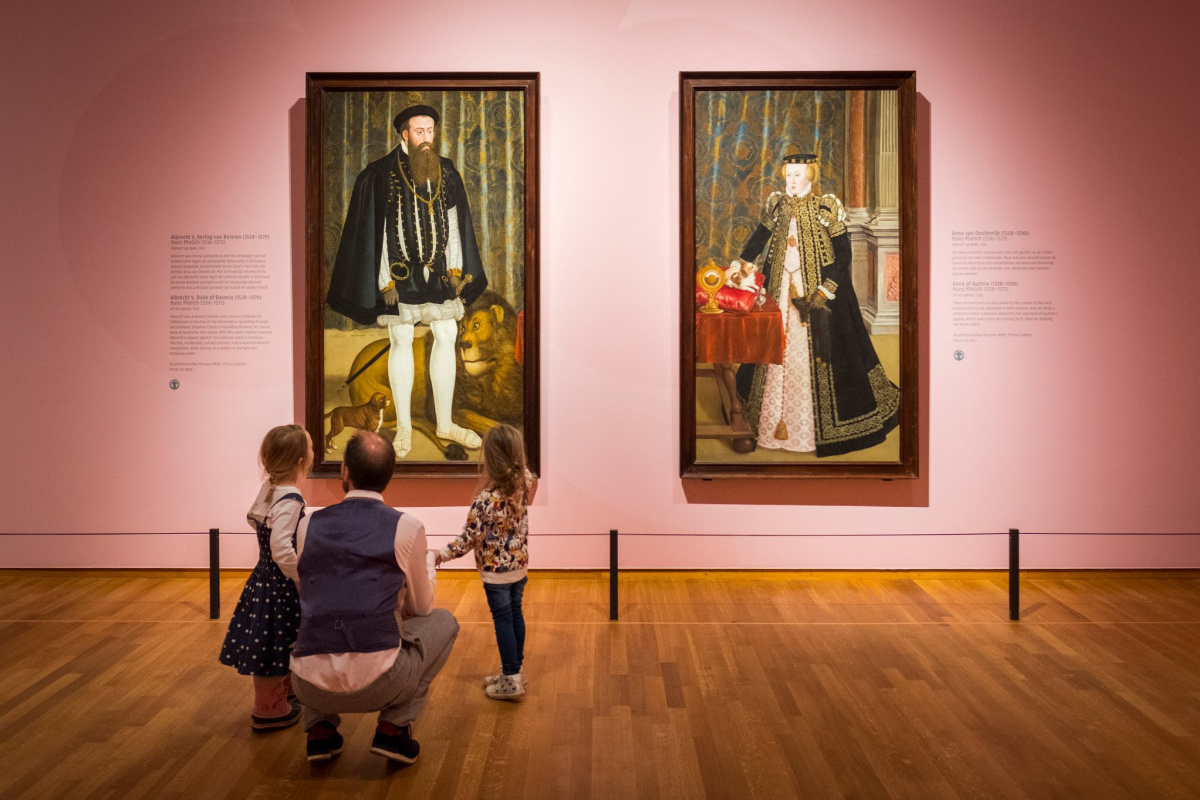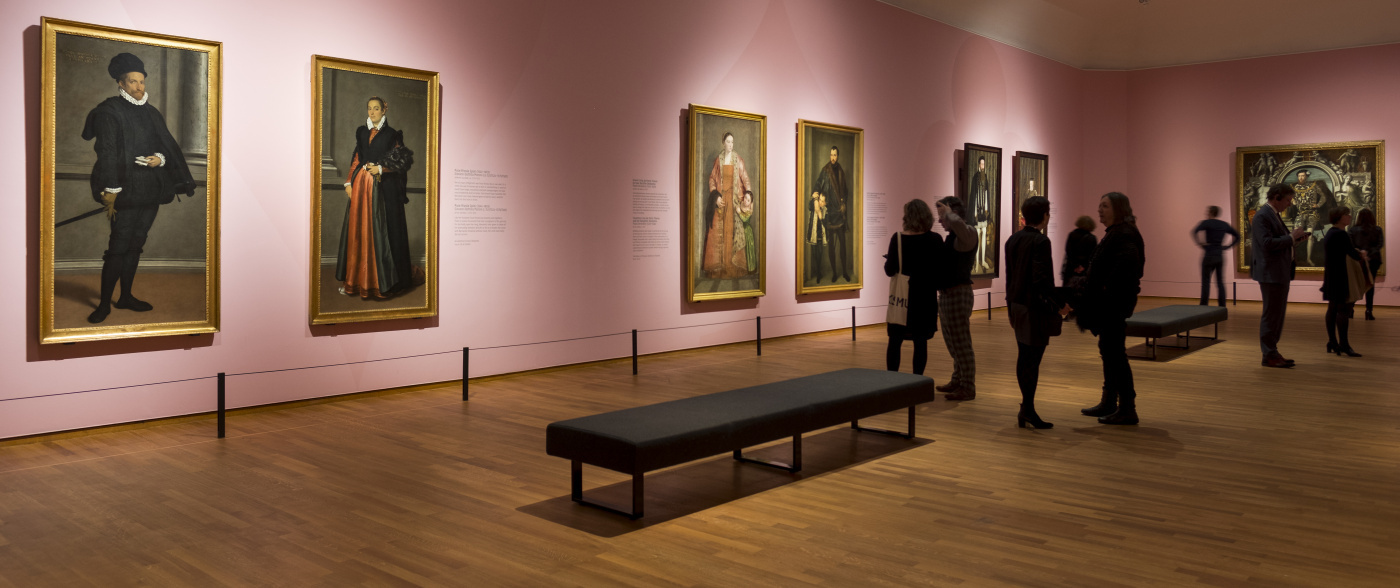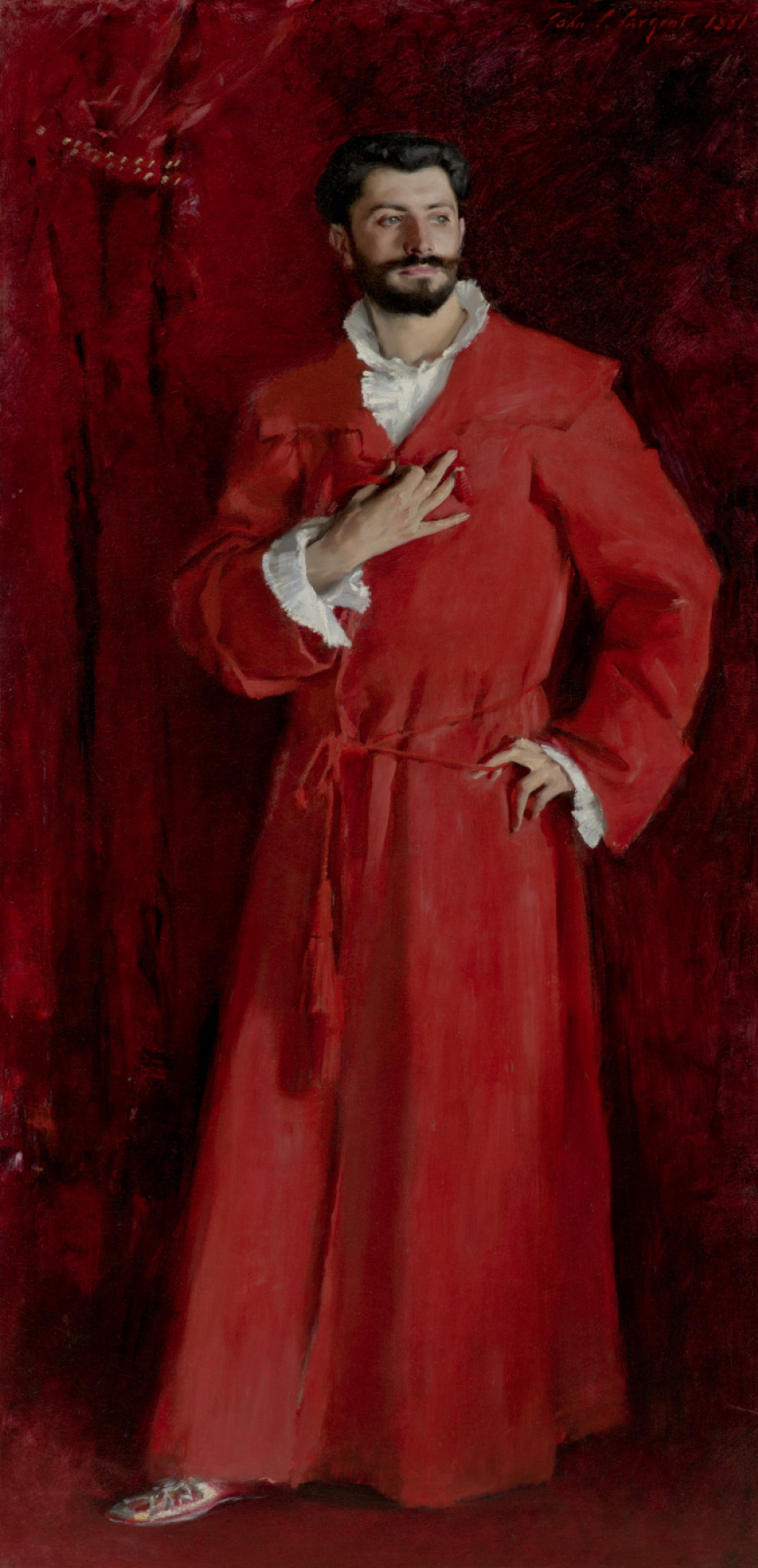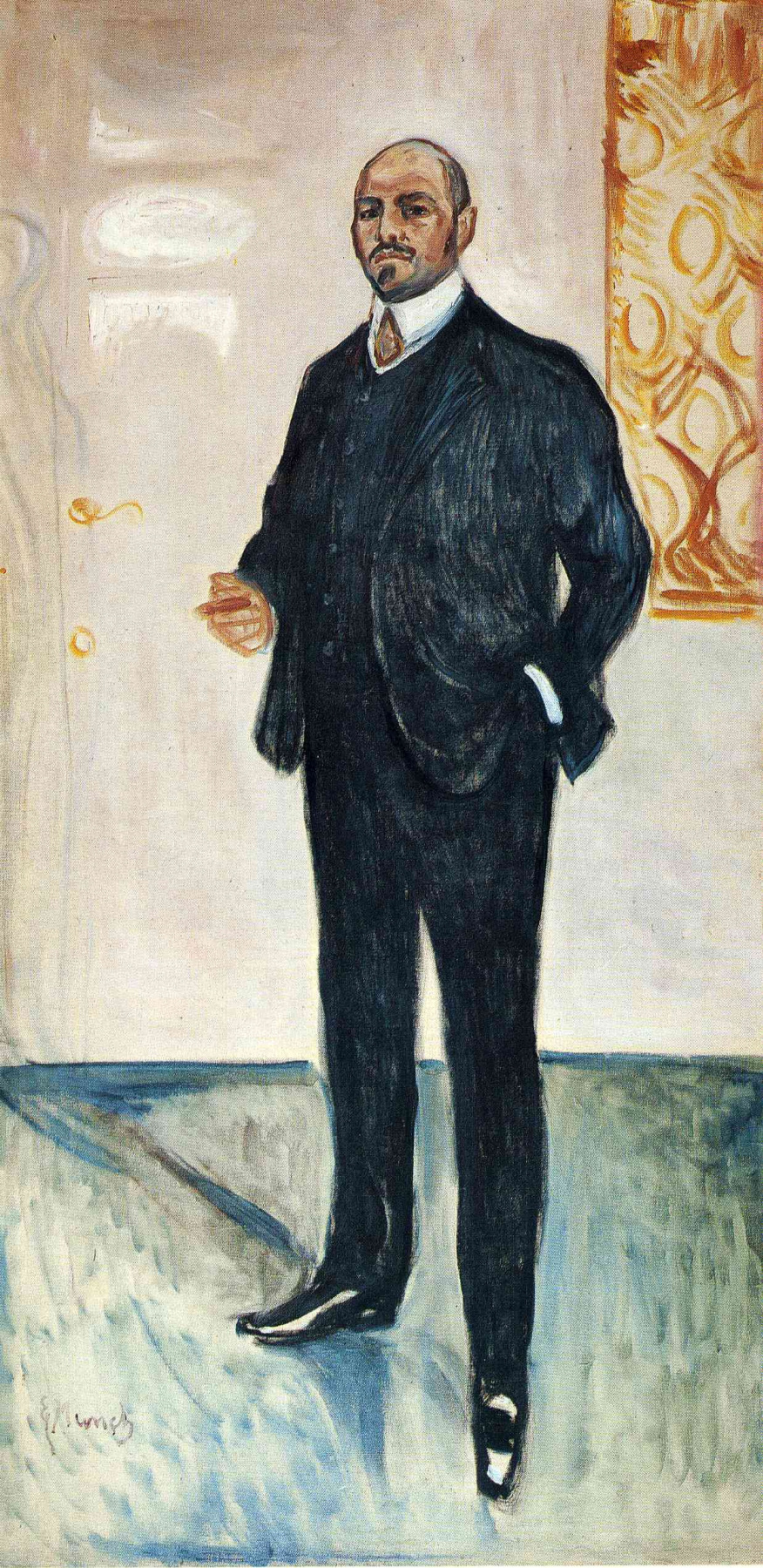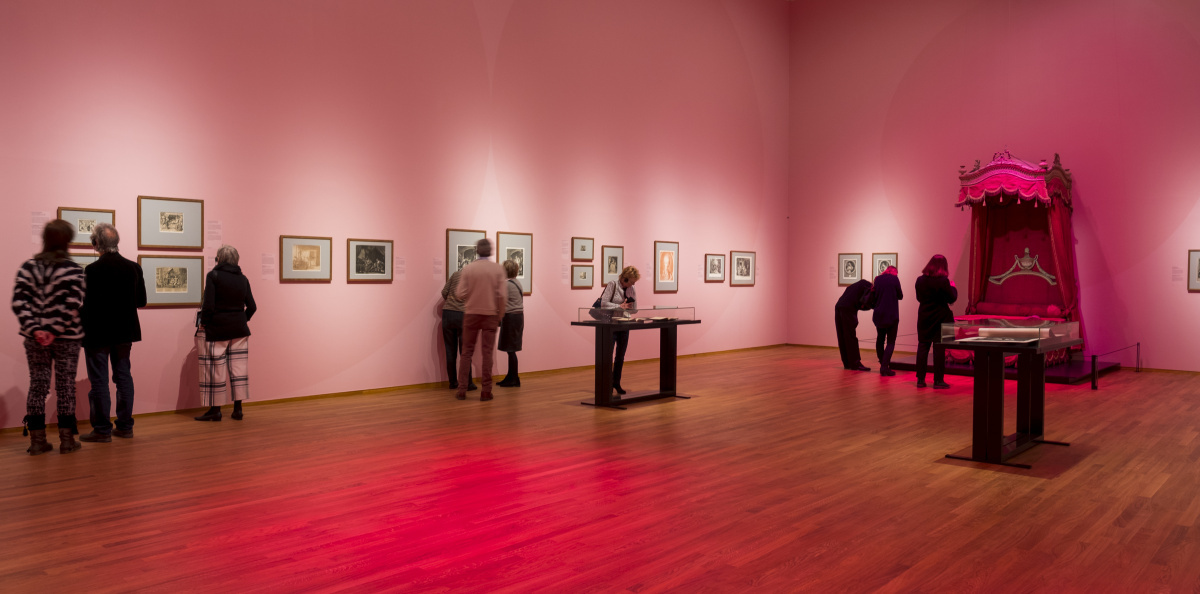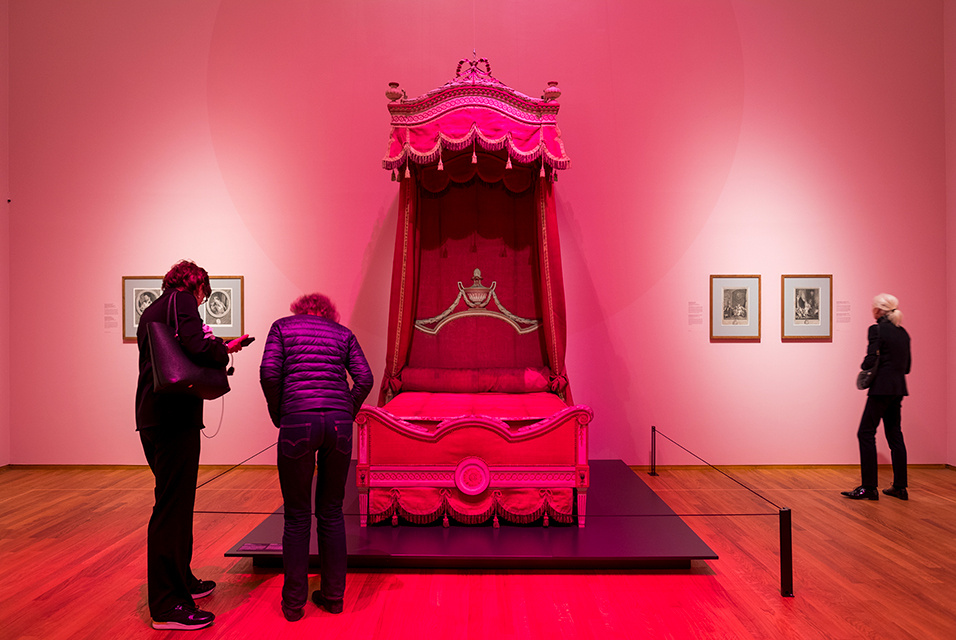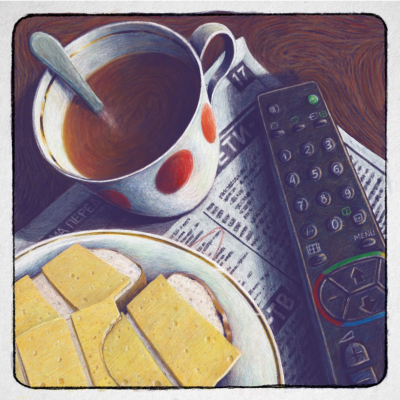The Dutch national museum Rijksmuseum in the exhibition "High Society" in Amsterdam has gathered almost 40 magnificent full-length portraits from the 16th to the 20th centuries by the leading artists of their day. The paintings offer a fascinating insight into the messages that the great and the good sought to convey about themselves.

With the High Society exhibition, Rijksmuseum reveals the history of life-size, standing and full length type of portraiture for the first time. Life-size portraits of powerful princes, eccentric aristocrats and fabulously wealthy citizens were painted by the great masters of art history, including Cranach, Veronese, Velázquez, Reynolds, Gainsborough, Sargent, Munch and Manet. Loans have come from museums and private collections from all over the world including Paris, London, Florence, Vienna and Los Angeles.
Most of the people portrayed are very lavishly dressed, giving the exhibition an overview of four centuries of fashion: from the tightly cut trousers and doublet from 1514 to the haute couture of the late nineteenth century. Some of the subjects portrayed, however, are wearing fancy garments in an antique style.
Most of the people portrayed are very lavishly dressed, giving the exhibition an overview of four centuries of fashion: from the tightly cut trousers and doublet from 1514 to the haute couture of the late nineteenth century. Some of the subjects portrayed, however, are wearing fancy garments in an antique style.
The centrepiece of exhibition is Rembrandt’s spectacular wedding portraits, Marten Soolmans and Oopjen Coppit. The wedding couple is the only couple that Rembrandt ever painted life-size, standing and full length (1634). The paintings are on display in the exhibition for the first time since their restoration — completed at the beginning of 2018.
The Portraits of Marten Soolmans and Oopjen Coppit by Rembrandt were jointly purchased by the Kingdom of the Netherlands and the Republic of France in 2016. Rijksmuseum Collection and Musée du Louvre Collection. Marten and Oopjen became the most expensive Old Master paintings in history, bought for €160 million from Éric de Rothschild’s collection on the 1 February 2016.
The Portraits of Marten Soolmans and Oopjen Coppit by Rembrandt were jointly purchased by the Kingdom of the Netherlands and the Republic of France in 2016. Rijksmuseum Collection and Musée du Louvre Collection. Marten and Oopjen became the most expensive Old Master paintings in history, bought for €160 million from Éric de Rothschild’s collection on the 1 February 2016.

Rembrandt van Rijn, left: Marten Soolmans, 1634, oil on canvas, 2.1×1.4 cm. Courtesy: Rijksmuseum, Amsterdam; right: Oopjen Coppit, 1634, oil on canvas, 2.1×1.3 m. Courtesy: Musée du Louvre, Paris
Rembrandt only painted three full-length portraits; these are two of them, and they are the only pair. Because of the time involved in painting so much canvas — a combined expanse of over five and a half square metres in this case — this was a form of portraiture reserved for royal and noble subjects and, later, for what we would now call ‘the one percent'.
Artists had a variety of methods to highlight their clients' status. Rembrandt used his masterful skill in depicting texture and fabric to draw attention to the wealth of the prominent Amsterdam citizens Marten Soolmans and his bride, Oopjen Coppit, in their portraits. It is a common misconception that the Dutch of that era wore black out of puritan self-restraint — as the Rijksmuseum’s curator of costume, Bianca du Mortier, explained, that could not be further from the truth.
Artists had a variety of methods to highlight their clients' status. Rembrandt used his masterful skill in depicting texture and fabric to draw attention to the wealth of the prominent Amsterdam citizens Marten Soolmans and his bride, Oopjen Coppit, in their portraits. It is a common misconception that the Dutch of that era wore black out of puritan self-restraint — as the Rijksmuseum’s curator of costume, Bianca du Mortier, explained, that could not be further from the truth.
"Black was very expensive because it involved a complex dyeing process," Bianca du Mortier said. "Wearing it was a sign of status, particularly when it was elaborately embellished, as in the Rembrandt example."
Marten and Oopjen’s friends are international well-to-do's like dukes, countesses, and members of aristocratic families. They are appropriately dressed according to the latest fashion of their times. The backgrounds vary from richly decorated interiors to lush settings in the outside landscape
. The result is a much-varied set of works, embodying both a historic sense of fashion as well as the changing ways in which artists liked to portray their subjects. This exhibition shows that life-size portraits took various forms and served a variety of functions.
The Hapsburg emperor Charles V popularized the full-length portrait for the Europe’s ruling elites in the 16th century. Fully aware of its religious origins, he was effectively declaring himself God’s representative on earth.
The full-length portrait was often used also to celebrate the union of two influential families. Such was the case with Henry IV, duke of Saxony, and his bride, Catherine of Mecklenburg, whose 1514 portraits by the German artist Lucas Cranach the Elder were opulently adorned in the colors of their coats of arms. The continuation of a powerful dynasty could also by emphasized by the inclusion of children.
The full-length portrait was often used also to celebrate the union of two influential families. Such was the case with Henry IV, duke of Saxony, and his bride, Catherine of Mecklenburg, whose 1514 portraits by the German artist Lucas Cranach the Elder were opulently adorned in the colors of their coats of arms. The continuation of a powerful dynasty could also by emphasized by the inclusion of children.

Paolo Veronese, Count Iseppo da Porto / Countess Livia da Porto Thiene, c. 1552. Baltimore, Walters Art Museum and Florence, Galleria degli Uffizi, Contini Bonacossi Collection
During the 18th century, when the full-length portrait was at its peak in Britain, two very different social groups took advantage of its promotional opportunities. Aristocratic women, like Jane Fleming, would flaunt their beauty and elegance with help from masters of the genre such as Joshua Reynolds, while aristocratic men would show off their personal or professional accomplishments. The intention was the same: to enhance their reputation in society.

Joshua Reynolds, "Jane Fleming, Later Countess of Harrington" (1778−79) Credit San Marino, the Huntington Library, Art Collections and Botanical Gardens
The Belle Époque, the period of optimism and economic prosperity in Europe from 1871 to 1914, was the heyday for the most sumptuous of portrait formats. In the aftermath of the French, American and Industrial Revolutions, a newly rich clientele clamored for the ultimate drawing room accessory to emphasize their entry into high society.
In the aftermath of World War I, the extravagance of the full-length portrait came to be seen as excessive and the formal society that the portrait relied on began to disintegrate.
In the aftermath of World War I, the extravagance of the full-length portrait came to be seen as excessive and the formal society that the portrait relied on began to disintegrate.
Dr. Pozzi at home
1881, 204.5×111.4 cm
Walter Rathenau
1907, 220×110 cm
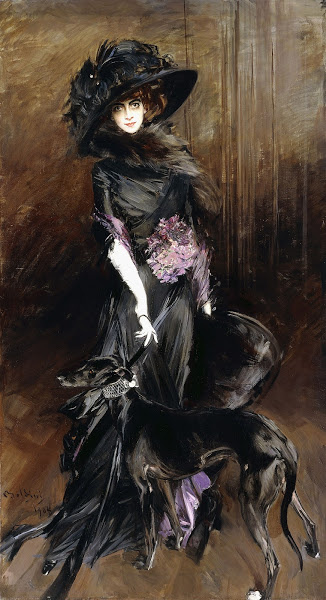
It is doubtful if such a thing would have bothered Marchesa Luisa Casati, a woman who wore live snakes as jewelry and paraded around her hometown, Venice, with a pair of cheetahs on leashes. The marchesa was painted in her prime by Giovanni Boldini in 1908; the bold brush strokes, confident pose and penetrating gaze perfectly sum up a woman whose aim in life was to be nothing less than a work of art.
Left: Giovanni Boldini, Marchesa Luisa Casati with a Greyhound, 1908. Private collection.
During High Society, the viewer can take a sidestep and see another exhibition. Guilty Pleasures is on show in the adjacent galleries. If you look at the portraits in High Society as displaying the rich and famous at their best, think of the latter one as getting a glimpse into the real world behind them. Over 80 prints and drawing show a peek into the lives behind closed doors. Those works tell a tale of secret parties, excessive drinking, gambling, and visits to brothels. The two exhibitions together are two sides of the same medal, complementing each other’s stories.
The High Society exhibition will be on show till June 3, 2018. It is such an overture to the Year of Rembrandt in 2019, during which the 350th anniversary of the death of the artist will be extensively celebrated.
Based on materials from Rijksmuseum official site, Artdaily, NY Times.






